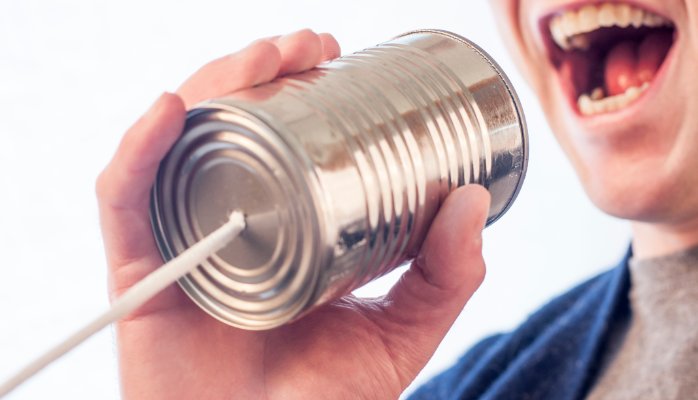No one’s quite certain of the origins of cold-calling, although the story goes that when Alexander Graham Bell first invented the telephone, he already had two voicemail’s from a telesales person.
Earlier this week an old sales colleague and friend of mine called me looking for some advice. He’s a seasoned sales professional with 25+ years enterprise sales under his belt and a successful track-record of closing big deals. Like many other sales driven companies, the business he works for is struggling to hit their numbers and fill the pipeline, in an increasingly commoditized market moving rapidly to the cloud. His question to me was this …
Cian, my boss is trying to get me to make cold-calls to fill the sales funnel. Based on what you’re seeing and hearing in the market, is this still a valid strategy in this day and age and if not, what the hell should we be doing to find new leads?
In this post I’ll aim to answer the first of his questions – is cold-calling still a valid strategy – and I’ll discuss new strategies to fill the sales funnel in a follow-up article.
Is cold-calling still valid in this day and age? It’s a pretty loaded question, given how many businesses out there built their customer bases off the back of cold-calling. Like so many things in life and business, there are two schools of thought when it comes to cold-calling. Many salespeople and sales leaders still swear by this tried and trusted method of getting on the phones and drumming up business. They apply the ‘law of averages approach’ arguing if they make enough calls, they’ll eventually hit their numbers.
I started my career in an Inside Sales role in the late 1990’s and would make literally hundreds of calls a week to hit my target of meetings booked, but let’s be honest a lot has changed since then. Most of you reading this post will be doing so on your smartphone, tablet or laptop/desktop. Have a look around you, is there a desk-phone in sight and if so, how many calls a day do you receive on it anymore?
In my opinion the old method of cold-calling has become a high cost, low value approach to filling a sales pipeline, despite the number of companies still spending a significant amount of their budget on these type of initiatives. In today’s sales world, whether its B2B or B2C, you have to earn the right to talk with prospective customers. Overt selling, cold-calling, interrupting people during their daily lives is no longer a valid way to build interest and awareness.
What do the numbers say? In 2011, Baylor University’s Center for Research partnered with a US real estate firm to conduct the first scientific study to quantify the effectiveness of cold-calling.
160 agents selected for the study were provided with a standardised cold-calling script and committed to set aside an hour each day over a two-week period to make cold calls in his/her respective geographic region. Agents were asked to call a random list of numbers from a region not previously marketed to.
- On average each call took five minutes with an agent making on average 209 calls over 7.5 hours
- 72 percent of calls went to voice mail or were a wrong number
- 28 percent or 58 calls were answered
- One qualified appointment, or referral, came from every 209 calls
- The most productive time was 10 am – 2 pm, the least effective after 5 pm.
Let’s look at those numbers again, 160 agents making an average of 209 calls a day for 10 days = 334,400 calls, which equates to 1,600 appointments. We don’t have any stats on the percentage of appointments that converted into closed business, but either way that’s an appalling amount of interruption, wasted cost of sale and negative impact to your brand, for a less than 1% conversion rate.
The most surprising thing about these sort of numbers, is how few people are surprised by them. Many of those businesses relentlessly pursuing cold-calling strategies would be the first to admit they aren’t working. The real reason they’re sticking with cold-calling is they simply don’t know what else to do. So let’s quickly explore some of the reasons cold-calling gets such poor traction these days.
Negative views of cold-calling
- They usually tend to call at the wrong time – In the B2C world during dinner or when the kids are being put to bed; in the B2B world … pretty much any time is the wrong time to get a cold-call
- They go straight into pitch mode, without checking to see if now is a good time or whether you’re an appropriate target for their product/service
- The calls are usually scripted and the callers often don’t pause for breath for the first 30 seconds
- They can be pushy, persistent and you often have to be rude to get yourself off the phone, leaving you feeling upset and even less disposed to take the next cold-call
- Many countries around the world have introduced ‘Do Not Call’ registers legally protecting you from receiving telesales and telemarketing calls. If they have had to legislate against a sales technique, you have to assume its become pretty bad!!
- In fact some sales experts, myself included, believe simply picking up the phone and dialing is not just a poor sales strategy, its actually negatively impacts your brand, your credibility and the long term viability of your business.
For those salespeople (including my old friend and colleague) obliged to keep cold-calling, here are 7 Strategies to increase the temperature of your calls from cold to lukewarm, if not positively tepid!
- Remember the goal of a cold-call should not be to make a sale over the phone, counter-intuitive as this may seem. The goal should be to participate in a two-way conversation, educate, engage or even intrigue the person on the other end and gain permission to move to the next step of the sales process
- Don’t just call at random, do some research on the industry and the individual you are planning to contact. Anything that can create some common ground and help you gain credibility in that all important first 20 seconds
- Send them something, anything in advance of your call. It could be a letter, an invitation to an event or even just an email if you are legally allowed to. Yes, this increases the cost and also the time taken, but it also significantly increases your chances of having a conversation. You can than start the call by saying, “I’m just giving you a quick call as a follow up to the brochure/ flyer/fridge magnet we sent out … do you remember seeing that?”. Right away you’re having a slightly warmer version of the call
- Ask some open-ended questions, master the art of active listening, don’t just fake it … genuinely care about what you’re hearing
- Allow the conversation to flow naturally, but have some signposts during the call to check if there’s a match between you and the person you are speaking to, without trying to control the call and move it to a ‘next step’. The moment you begin trying to direct your prospect into your ‘sales process’ they are likely to sense it and duck for cover
- Master the art of storytelling … similar customers, what was their experience, have you had that problem, if not you someone else in the home/business …
- Don’t allow cold-calling to become your only strategy to fill your sales funnel. If you do, you’ll have a tough time making sales and hitting your numbers.
I recognise that this can be a pretty emotive topic in sales circles, so please feel free to like, share and comment on this post if you agree, disagree or have another perspective?



Recent Comments